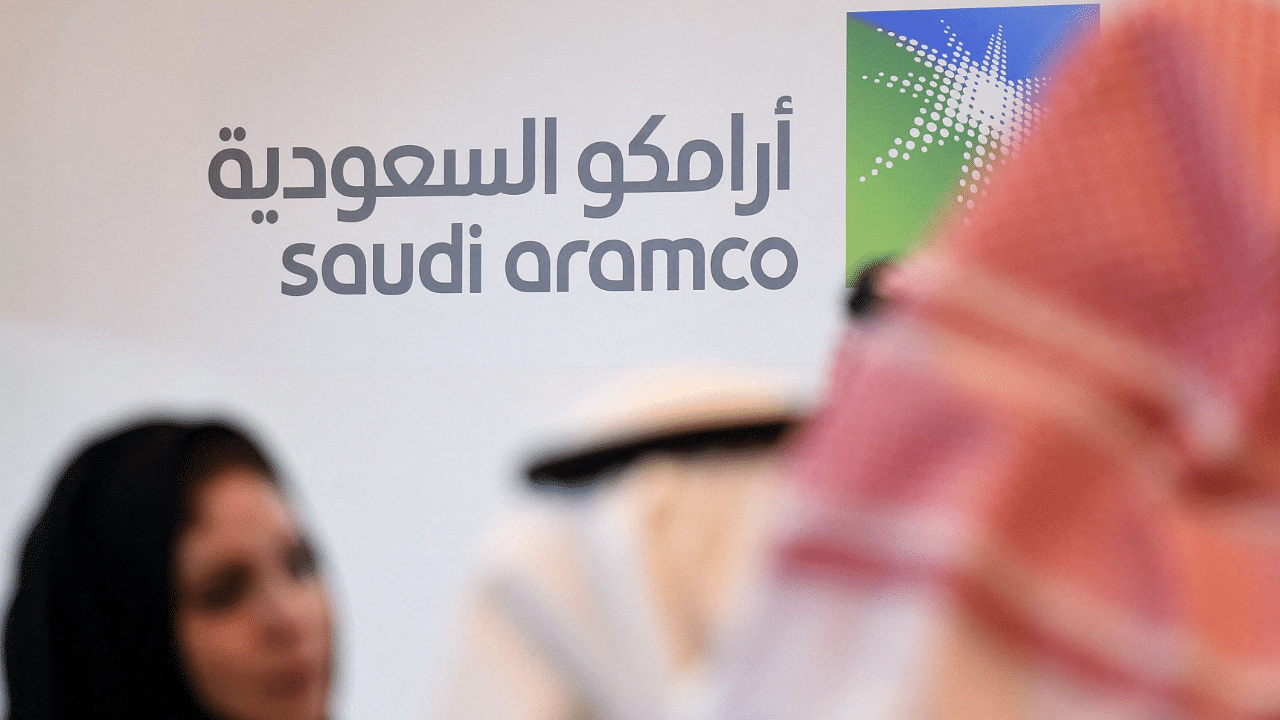
Saudi Aramco will increase spending and issue bonus shares as oil’s surge to more than $100 a barrel bolsters the company’s plan to boost production.
The Saudi Arabian firm, like rivals such as BP Plc and Chevron Corp., has experienced a sharp turnaround from 2020, when the coronavirus pandemic hammered energy demand and forced it to shelve several projects.
Net income rose to $110 billion in 2021, more than double the figure of $49 billion from a year earlier, Aramco said on Sunday. The state-controlled company will probably increase capital expenditure to between $40 billion and $50 billion this year, compared with $32 billion in 2021.
Aramco, the world’s biggest energy exporter, forecasts more growth in investment until the middle of the decade. That makes it stand out from many competitors who are cutting back on fossil fuels to reduce carbon emissions. Aramco has said oil and gas consumption will remain strong for decades and that the run up in prices underscores the need for more exploration.
The company wants to raise crude-production capacity to 13 million barrels a day from 12 million by 2027, a project that will cost billions of dollars. And it is trying to increase gas output by more than 50 per cent by 2030.
“Substantial new investment is required to meet demand growth, against a broader decline in upstream investment across the industry globally,” Aramco said on Sunday.
Aramco will also focus on blue hydrogen and the carbon-capture facilities needed to manufacture it. The fuel emits only water vapor when burned, making it less polluting than oil, gas and coal. But the technology for production on a mass-scale is still unproven, and there’s unlikely to be a significant global market before 2030.
Dividend Unchanged
Aramco opted to keep its dividend -- a major source of income for the Saudi government, which holds 98 per cent of the stock -- unchanged for 2021 at at $75 billion. Several analysts expected an increase. Morgan Stanley said last week Aramco had “ample” room to boost the cash payout to around $94 billion. The company’s forward-looking dividend yield is 3.3 per cent, lower than that of all Big Oil firms in the U.S. and Europe.
Still, Aramco said it would issue one bonus share for every 10 shares owned. The stock rose 3.4 per cent on Sunday in Riyadh to 43.25 riyals. It is up 21 per cent since the end of 2021 and near a record high.
Gearing, a measure of debt to equity, fell to 14.2 per cent at the end of last year. It’s now below the company’s self-imposed cap of 15 per cent for the first time since mid-2020.
Aramco was able to reduce the ratio thanks in large part to free cash flow rising to $108 billion in 2021, from $49 billion a year earlier. That enabled it to cover the dividend without raising debt, unlike in 2020.
Post-tax profit climbed to $36 billion in the fourth quarter, based on Bloomberg’s calculations. That’s the highest level since at least early 2018. Aramco will break down numbers for the period on Monday.
Oil Demand Recovers
Global oil demand will probably return to pre-pandemic levels -- roughly 100 million barrels a day -- by the end of 2022, according to Chief Executive Officer Amin Nasser. Aviation fuel use is still down by around 2 million barrels a day, he said.
Before Russia’s invasion of Ukraine on Feb. 24, energy traders had predicted a quicker return to normality. Many now see the fallout from the war -- which triggered a further jump in oil and gas prices -- suppressing demand in some regions.
“While geopolitical factors have created new uncertainty, we anticipate oil demand will continue to grow for the rest of the decade,” Nasser told reporters. “We are driven by the belief that the world’s need for affordable, reliable and sustainable energy will continue to grow. And that future includes oil and gas playing a key role.”
The company is mulling several opportunities in Asia, he said. Such deals would likely focus on expanding Aramco’s downstream business, which includes refining and chemicals subsidiary Sabic.
Chemicals Push
Aramco said it will try to increase its oil-to-chemicals processing capacity to 4 million barrels a day, without giving a timeframe. Demand for chemicals to make plastics and composites that go into mobile phones, cars and televisions has soared in the past year.
Earlier this month, Aramco revived discussions to build a multi-billion dollar refining and petrochemicals complex in China with Norinco, a state-owned defense contractor. Billionaire Gautam Adani, meanwhile, is exploring investment opportunities in India with Aramco, in areas such as chemicals and fertilizers, Bloomberg reported last week.
Yemen’s Houthi rebels attacked several sites across Saudi Arabia with drones and missiles early on Sunday, including some run by Aramco. Nasser said the strikes, which targeted a fuel depot in Jazan in the south west of the kingdom and a liquefied gas plant in the Red Sea city of Yanbu, did not cause any injuries or affect the company’s operations.
The Iran-backed Houthis have regularly attacked Saudi Arabia in the past two years, though they rarely cause much damage. A coalition including Saudi Arabia and the United Arab Emirates began a military campaign in Yemen in 2015 against the Houthis after they dislodged the internationally-recognized government.